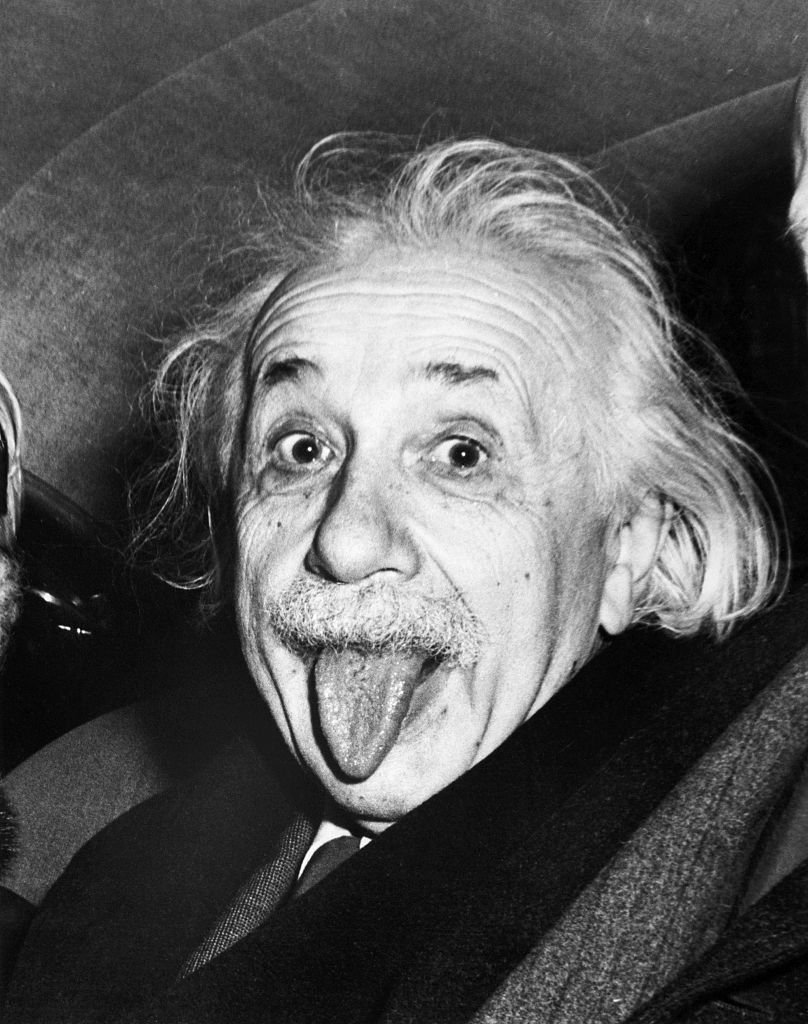Now, you are probably wondering why the fuck is this post titled "Mommy issues". I will get to that... soon. In this post I will be introducing relativistic energy and momentum, as well as four vectors. From this we can derive expression of speedy particles. Lightning McQueen is not the only speed here.
ANYWAYS, THIS IS GOING TO BE SO MUCH FUN.
Warning: Keep your tongue straight in your mouth as Norwegians says. This is probably going to be a confusing as shit, but I will try my very best.
Here is the scenario:
"A free neutron has a mean life time of about 12 minutes after which it disintegrates into a proton, an electron and a neutrino (we'll ignore the neutrino now, what a loser). A neutron moves along the positive x-axis in the laboratory frame with a velocity close to the velocity of light. It disintegrates spontaneously and a proton and an electron is seen to continue in the same direction as the neutron."

Here is the task:
Try to calculate the speed of the proton and the electron in the lab-frame. Ps. easier to do it in the rest frame.
I will do this using four vectors, relativistic energy and momentum :)
You are probably already confused as shit (me too tbh). Allow me to illustrate it with videos.
Lab-frame (t, x):
We observe a neutron with a velocity moving along the x-axis where it disintegrates.
We have \(P_\mu(n) = P_\mu(p) + P_\mu(e)\)
(I will get back to the equation later. As for now, read it as a neutron disintegrated and becomes proton and electron)
Rest frame (t', x'):
Neutron stays at the origin.
We have \(P'_\mu(n) = P'_\mu(p) + P'_\mu(e)\)
Do you see why it is easier to work in rest frame rather than lab-frame? In lab frame the neutron, proton AND electron has velocity! That makes every calculations so much harder!!
This was only the introduction. Now it is time for some hardcore (BUT SUPER COOL) physics (theory, we need some knowledge before beginning to solve anything)!
Let's start with familiar stuff.
You have all probably learned that:
- momentum, \(\vec{p}=m\vec{v}\).
- energy, \(\vec{E} = mc^2\)
- position vector, \(\vec{x} = (x_1, x_2, x_3) = (x, y, z) \)
Looks familiar?
If yes, great! NOW REMEMBER THOSE THINGS.
If no... how are you even here??

Next one:
Who is this dude? (I accept answer like crazy man sticking his tongue out).
In all seriousness, this is Albert Einstein (duh). This crazy dude introduced something called "Four- vectors".
In general a four-vector can be written as
\(\vec{x}_\mu=({x_0, x_1, x_2, x_2})\)
The notation for a four-vector includes \(\mu\) (a greek letter, mu) in the subscript. Also referred as Einstein notation. The Lorentz matrix is a conversion factor which allows us to calculate values from one frame of reference to another
\(\vec{x}'_\mu = C_{\mu\nu}x_\mu\)
In English: Four-vector in one frame of reference = conversion factor Lorentz matrix * four-vector in another frame of reference.
The Lorentz matrix is similar to the Lorentz factor. The only difference is Lorentz factor applies to 1D, while the Lorentz matrix applied to more dimensions. For four-vectors the Lorentz matrix applies to 4D.
The equation written out looks something like
\(\begin{pmatrix} x_0'\\ x_1' \\ x_2' \\ x_3' \\ \end{pmatrix} = \begin{pmatrix} \gamma & -v\gamma & 0 & 0\\ -v\gamma & \gamma & 0 & 0\\ 0 & 0 & 1 & 0\\ 0 & 0 & 0 & 1 \end{pmatrix} \begin{pmatrix} x_0\\ x_1 \\ x_2 \\ x_3 \\ \end{pmatrix}\)
Lorentz factor (in case your forgot)\(\gamma = \frac{1}{\sqrt{1-\frac{v^2}{c^2}}}\)
Remember the position vector? Instead of using a vector to describe only position, we can describe the position AND time of an event with a four-vector!! Like this:
\(\vec{x}_\mu = (t, x, y, z)\)
Idea for the future: if you and your partner gets engaged and wants the coordinates of proposal site on a necklace (as a memory). Get a four-vector instead, so you can include time of the proposal as well!! So romantic!! Though I am not sure if it is possible...
Did you know that we can construct a four-vector describing both energy and momentum of particle? That vector is called MOMENERGY! This post is called mommy issues becuase of MOMenergy and my issues with trying to wrap my head around it. You may laugh now. No...? Alright, hint taken, I'll get back to explaining.
A momenergy vector looks like this
\(P_\mu = (E, p_x, p_y, p_z)\)
With Lorentz- matrix we can describe momenergy in both lab-frame (E, p) and rest frame (E', p').
\(\begin{pmatrix} E'\\ p_x' \\ p_y' \\ p_z' \\ \end{pmatrix} = \begin{pmatrix} \gamma' & -v\gamma' & 0 & 0\\ -v\gamma' & \gamma' & 0 & 0\\ 0 & 0 & 1 & 0\\ 0 & 0 & 0 & 1 \end{pmatrix} \begin{pmatrix} E\\ p_x \\ p_y \\ p_z \\ \end{pmatrix} \tag{1}\)
which gives us
\(P'_\mu = \begin{pmatrix} \gamma' E -v\gamma' p\\ \gamma' p - v\gamma'\\ 0 \\ 0 \end{pmatrix} \tag{2}\)
Karl: WHOAH WHOAH WHOAH, slow down. What did you do now?
Essentially, I multiplied both matrixes on the right hand side of (1). Uhmm...easier said: row multiplied with column (google matrix multiplication if you are interested. Otherwise, trust me). Everything in y- and z- direction is negligible since the neutron only moves along the x-axis.
Karl: Understood.
Since the neutron only has movement along x-axis there is no relative velocity v. Equation (2) therefore looks something like this
\(P'_\mu= \gamma'(E, \vec{p}) = \gamma'(m, m\vec{v}) \tag{3}\)
Relativistic unit: c = 1
So what do we have here now.
- relativistic momentum, \(\vec{p}=\gamma m\vec{v}\)
- relativistic energy, \(\vec{E} = \gamma m\)
WHAT? In school they taught us these, but without \(\gamma\)? Was it all a lie?
Not exactly. What you learned was correct, but an approximation for low velocities :)
In high school, C ≠ 0. In this post, it is :)
Take a look at Lorentz- factor again, \(\gamma = \frac{1}{\sqrt{1-\frac{v^2}{c^2}}}\).
When we are studying cases of velocities much lower than speed of light, the Lorentz- factor is approximately 1. So you can just ignore it. In relativity that is not the case since we are working with incredibly high velocities, where \(\gamma\) actually does something to the equation.
NAP BREAK!
I have probably fried your brain enough. Take a nap. No overdose on coffee for you. Sometimes you just need sleep.

I sure hope you are well rested, because it is time for heavy duty algebra. We are finally going to calculate speed of the proton and the electron in the lab-frame.
Before we start. Don't mix up these variables or else you're gonna have a fucking hard time reading this section.
\(v'\): velocity in rest frame. Anything with a dash is rest frame.
\(v\): velocity in lab frame
Let's begin. Previously I wrote down this equation
\(P'_\mu(n) = P'_\mu(p) + P'_\mu(e) \tag{4}\)
This describes conservation of momenergy in rest-frame (WE ARE IN REST FRAME RIGHT NOW). You know how momentum and energy is conserved when doing "regular" physics, why shouldn't it be conserved in relativity?
Using equation (3) we can describe the momenergy of all the particles we are looking at:
- neutron: \(P'_\mu(n)= \gamma'_n(m_n, \vec{p}_n)\)
Wait, we are in rest frame aka, the frame of the neutron. So its speed relative to itself is... 0. Think of it like this: you are sitting still in a bus, driving away from your school. Looking out of the window you see the school slowly disappear and move away. In reality, you are the one driving away. The school doesn't move. However, since you are sitting still you don't feel like you have a velocity. Right now we are in rest frame, the neutron is like... sitting still... on a bus :)
Therefore, we have \(P'_\mu(n)= (m_n, 0)\)
- proton: \(P'_\mu(p)= \gamma'_p(m_p, \vec{p}_p) = \frac{1}{\sqrt{1-(v'_p)^2}}(m_p, m_p\vec{v}_p')\)
- electron: \(P'_\mu(e)= \gamma'_e(m_e, \vec{p}_e) = \frac{1}{\sqrt{1-(v'_e)^2}}(m_e, m_e\vec{v}_e')\)
C is still 1
Now putting all the expressions of momenergy for proton, electron and neutron back into (4) gives us.
\((m_n, 0) = \gamma'_p(m_p, \vec{p}_p) + \gamma'_e(m_e, \vec{p}_e) \tag{5}\)
I sure hope you like system of equations, because we have one from (5).
(Every calculation and equations related to the system of equations, has equation tag marked with decimals)
The system of equations is as follow:
\(\mathbf{m_n = m_p\gamma'_p + m_e\gamma_e'\tag{1.1}}\)
\(\mathbf{0 = m_p\gamma'_p v_p' + m_e\gamma_e' v_e'\tag{1.2}}\)
Ps. \(v' = \sqrt{1-{\frac{1}{\gamma'^2}}}\)
Oh boi, this is about to get heavy... With regular algebra manipulation we can transform (1.1) into expressions for \(\gamma_e'\) and \(\gamma_p'\).
\(\gamma_e' = \frac{m_n - m_p\gamma_p'}{m_e} \tag{1.3}\)
\(\gamma_p' = \frac{m_n - m_e\gamma_e'}{m_p} \tag{1.4}\)

Here, take a brownie! You need some sugar and energy to endure this hardcore algebra that is about to come.
Maybe you also need some
If we put the expression of the gammas (equation (1.3) and (1.4)) into (1.2) we have...
\(0 = m_p(\frac{m_n - m_e\gamma_e'}{m_p})\sqrt{1-\frac{1}{\gamma_p'^2}} + m_e(\frac{m_n - m_p\gamma_p'}{m_e})\sqrt{1-\frac{1}{\gamma_e'^2}}\)
Let me just remove some stuff that equalises each other
\(0 = (m_n - m_e\gamma_e')\sqrt{1-\frac{1}{\gamma_p'^2}} + (m_n - m_p\gamma_p')\sqrt{1-\frac{1}{\gamma_e'^2}} \tag{1.5}\)
Are you confused as shit yet?? Because I am. I choose to put in temporarily variables to make life a bit easier for myself. The variables are in order.
\(0 = a\sqrt{b}+c\sqrt{d}\)
\(a\sqrt{b} = -c\sqrt{d}\)
\((a\sqrt{b})^2 = (-c\sqrt{d})^2\)
\(a^2b = c^2d\)
Putting back the original expressions we end up with
\((m_n - m_e\gamma_e')^2(1-\frac{1}{\gamma_p'^2}) = (m_n - m_p\gamma_p')^2(1-\frac{1}{\gamma_e'^2})\)
Now, I don't want to bore you with EVERY mathematical detail so trust me on what I am about to say (or you are allowed to calculate yourself if you want to. It is simple algebra)
\(\gamma_p' = \frac{m_n^2+m_p^2-m_e^2}{2m_nm_p} \tag{1.7}\)
\(\gamma_e' = \frac{m_n^2-m_p^2+m_e^2}{2m_nm_e} \tag{1.8}\)
In one of the side notes I wrote \(v' = \sqrt{1-{\frac{1}{\gamma'^2}}}\). From equation (1.7) and (1.8) we have the gammas needed to calculate v' of an electron and proton. Does this mean we can finally calculate the velocity???
\(v_p' = \sqrt{1-(\frac{2m_nm_p}{m_n^2+m_p^2-m_e^2})^2} \tag{1.9}\)
\(v_e' = \sqrt{1-(\frac{2m_nm_e}{m_n^2-m_p^2+m_e^2})^2} \tag{1.10}\)
Damn, this is electron and proton velocity in rest-frame (marked system, note the apostrophe)... but we wanted lab-frame.

WE ARE ALMOST THERE GUYS!!! HOLD ON!!
It is actually pretty easy to transform the velocities (1.9) and (1.10) to lab- frame. If you remember from the equation with Lorentz matrix:
\(\vec{x}'_\mu = C_{\mu\nu}x_\mu\) (one frame of reference = Lorentz- matrix * another frame of reference)
we can modify it slightly:
\(v = \frac{v'}{\gamma'}\)
And voíla
\(v_p = \frac{v_p'}{\gamma_p'} \tag{6}\)
\(v_e = \frac{v_e'}{\gamma_e'} \tag{7}\)
Believe it or not, we have everything we need (if your head is as messy as this page, welcome to the club). Let's combine:
- (6), (1.7), (1.9)
\(v_p = \frac{\sqrt{1-(\frac{2m_nm_p}{m_n^2+m_p^2-m_e^2})^2} }{\frac{m_n^2+m_p^2-m_e^2}{2m_nm_p}} \)
- (7), (1.8), (1.10)
\(v_e = \frac{ \sqrt{1-(\frac{2m_nm_e}{m_n^2-m_p^2+m_e^2})^2} }{\frac{m_n^2-m_p^2+m_e^2}{2m_nm_e}}\)

We actually found the speed of proton and electron in lab-frame!!
Hmmm... well only the expressions. Here are the particle masses if you are super interested in actual numbers.
| Particle | Mass [kg] |
|---|---|
| Neutron | \(1.67492747\cdot 10^{-27} \) |
| Electron | \(9.10938188\cdot10^{-31}\) |
| Proton | \(1.67262158\cdot 10^{-27}\) |
Fun fact section (with a teeny tiny bit more math. It is very easy this time, we are done with the hardcore part).
There is probably something you didn't notice earlier. More specifically equation (1.1) in our system of equations
\(m_n = m_p\gamma'_p + m_e\gamma_e'\)
MASS IS NOT CONSERVED! (seen from the Lorentz factor, which does fucky wucky stuff to the mass. Instead of just keepin it as it is)
But the neutron disintegrated into an electron and proton? Shouldn't the mass be conserved then?
Okey so what if we assume the mass is conserved. That means equation (1.7) looks like this
\(\gamma_p' =\frac{m_n^2+m_p^2-m_e^2}{2m_nm_p}= \frac{(m_e+m_p)^2+m_p^2-m_e^2}{2(m_e + m_p)m_p} = \frac{2m_p^2}{2m_p^2} = 1\)
What this implies is the velocity of the electron relative to neutron is zero, which is impossible! So mass cannot be conserved. So where did it go? Oh right, mass gets conserved into energy throughout this process.
And with that, I conclude I still have mommy issues and can't fucking wrap my head around this shit. Now I may go sleep in peace.
